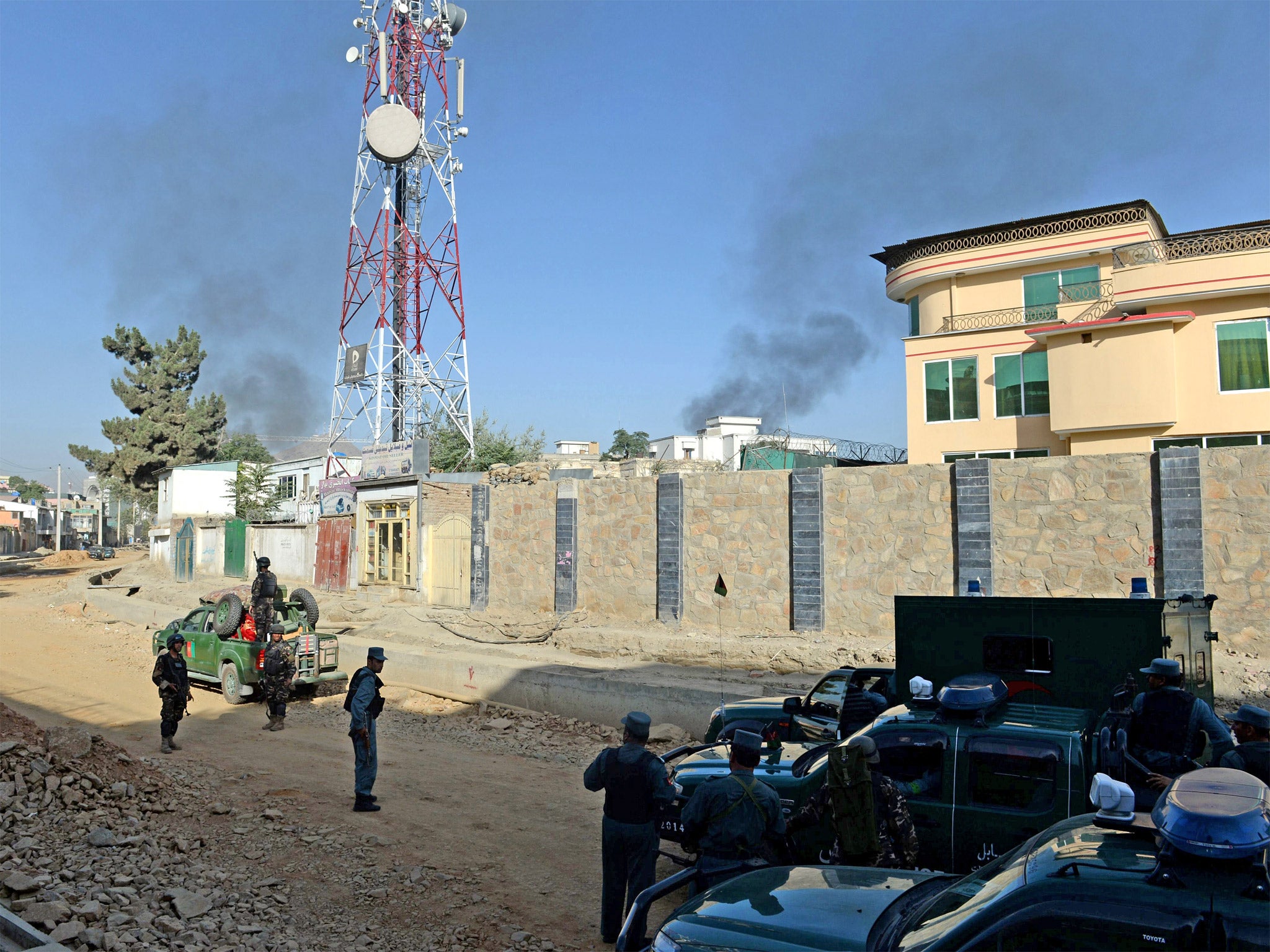Nowhere is safe: Taliban launch strike on President Karzai's presidential palace
Militants say targeting of Presidential Palace would not affect reconciliation process

Taliban fighters carried out an audacious suicide attack in the heavily fortified heart of Kabul, with the Presidential Palace and the headquarters of the CIA as apparent targets.
The gunmen had been dressed in military uniform and fake badges and passes for Land Cruisers of the type used by security forces to get into the diplomatic enclave in Afghanistan's capital before opening fire in a gun battle which lasted for 90 minute and left four of the attackers and three guards dead.
Among those caught up in the fighting were a group of journalists who had been waiting for an interview with Hamid Karzai about talks organised by the Americans with the Taliban in Qatar. The US administration had maintained that recent statements made by senior members of the insurgency showed that they were seeking a peaceful end to the conflict.
Afghan government officials pointed out that what happened graphically illustrated that the Taliban were not serious about giving up violence. In other attacks ten people, eight of them women, were killed by a roadside bomb in the southern province of Kandahar and six policemen died in another blast in Uruzgan as they returned to their base after a patrol.
James Cunnigham, the US ambassador to Afghanistan, said “ This again demonstrates the futility of the Taliban efforts to use violence and terror to achieve their aims”. Zabihullah Mujahid, a Taliban spokesman insisted that the attacks would not affect the reconciliation process which was following a “political track”. He also pointed out there was no ceasefire in existence between the militants and the Afghan and US governments.
Although the protected zone of the Afghan capital is guarded by a succession of checkpoints and blast walls, the insurgents had picked a route along Kabul river which only appeared to have had one major military post before the outer gates of the Palace indicating that reconnaisance is likely to have been carried out beforehand.
Kabul's police commissioner, Ayoub Salangi, held that the security screen had actually worked. “It was clever of the guards at the gate to recognise the fake identification card and when they understood that, they stopped them and two or three attackers jumped out from the vehicle and fighting started,” he said.
Presidential guards and security personnel at the Ariana Hotel, used by the CIA for over a decade, exchanged fire with the insurgents as passers-by including pupils heading for a nearby schools took shelter behind walls.
Ariana Square, the scene of the fighting, is the place where the Taliban hung the tortured body of the former president Najibullah from a lamppost when they took control of the city in 1996. US and British officials say that his government fell because the bankrupt Soviet Union turned off the cash which supported it. This will not happen, they claim, to the successor of President Karzai because the international community has pledged billions in civil and military aid which will continue when international forces end combat operations at the end of next year.
However, an indication of the volatile mood in the capital was illustrated 24 hours earlier when Kabul police had once again opened fire - this time at protestors who set fire to a vehicle while chanting “death to Karzai,” and “death to the occupiers.”
The demonstrations were against government plans to develop a subdivision in the capital on land long occupied by squatters. Police general Mohammad Zahir said his forces were only deployed after Japanese experts working on the construction project called saying that “armed criminals” were threatening to kidnap them. Two of his officers and eight protesters were injured.
The attack in Ariana Square reinforced the trepidation and pessimism felt by many about what will happen after Isaf (International Security Assistance Force) withdraws. Samira Laghmani, a 23 year old student, said “We shall be seeing more of these, we have no doubt. My friends and I are also not happy about the talks in Qatar. The best thing would be if they fail; negotiating with the Taliban means concessions and these will be in things like womens' rights. The best thing the Americans can do is make sure our army and police are trained and have proper weapons to defend us against the Taliban.”
On guard: Kabul’s high-security zone
Kabul is dotted with checkpoints which have increased in number as the attacks on the capital have become more frequent.
The Presidential Palace, the headquarters of the International Security Assistance Force (Isaf), government ministries and most of the embassies are inside a zone of blast walls, barbed wire and rings of further checkpoints. The embassies have their own security guards and Isaf’s HQ is manned by international troops with a Quick Reaction Force. The area is also patrolled by a police commando unit and intelligence agents, while the nearby Ariana hotel houses a CIA station. The Ariana is thought to have been the target of the attack.
The strike was launched at 6.30am by four attackers in fake uniforms. One blew himself up and after several explosions the attackers were killed by private security contractors attached to the Ariana. Eight insurgents and three security guards were killed.
Subscribe to Independent Premium to bookmark this article
Want to bookmark your favourite articles and stories to read or reference later? Start your Independent Premium subscription today.

Join our commenting forum
Join thought-provoking conversations, follow other Independent readers and see their replies